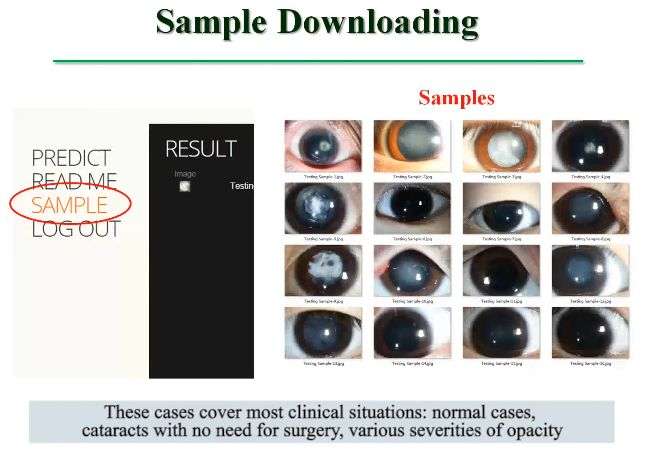January 31, 2017 report
Convolutional neural network able to identify rare eye disorder

(Tech Xplore)—A team of researchers with Sun-Yat-sen University and Xidian University, both in China, has developed a highly accurate convolutional neural network (CNN) system that is capable of recognizing a rare eye disorder in children. In their paper published in the journal Nature Biomedical Engineering, the team describes how they developed and built their system and how well it performed under varying circumstances.
Most people are aware of adult onset cataracts—the lenses become cloudy, making it difficult and eventually impossible to see. Fortunately, diagnosis is relatively simple and the surgery to treat it is one of the most common in the world today. Sadly, there is another type of cataract that impacts children—called congenital cataracts, they need to be diagnosed early for treatment to be effective. In this new effort, the researchers in China report on a new tool they have developed that is capable of diagnosing congenital cataracts as well as highly trained doctors.
The team consisted of both doctors and computer scientists, and their goal was straight forward: to find out if a convolutional neural network system could be developed to spot the rare disorder. As their name implies, CNNs are a class of neural networks, and as such, are programed to learn through example—generally, a lot of examples.
The immediate problem was the lack of samples due to the rarity of congenital cataracts. To overcome that problem, the researchers broke the design of the system down to three individual components; one for screening patients in the general population, one for what they called risk stratification and another for assisting in offering a physician treatment options. By feeding the system massive numbers of healthy eye scans, the system was able to learn to understand what eyes without the disorder were supposed to look like—then by adding in a small number of instances in which the disorder was present, the system learned to recognize them.
In testing their system, the researchers found that it had a 90 percent accuracy rate which is approximately that of the average ophthalmologist and it had zero false positives. The system did not do nearly as well at offering possible treatment options, however. More work will need to be done, the team notes, but they suggest that in the future, many such tests will likely be done by computers, saving the difficult to quantify medical practices for humans.
More information: Erping Long et al. An artificial intelligence platform for the multihospital collaborative management of congenital cataracts, Nature Biomedical Engineering (2017). DOI: 10.1038/s41551-016-0024
Abstract
Using artificial intelligence (AI) to prevent and treat diseases is an ultimate goal in computational medicine. Although AI has been developed for screening and assisted decision-making in disease prevention and management, it has not yet been validated for systematic application in the clinic. In the context of rare diseases, the main strategy has been to build specialized care centres; however, these centres are scattered and their coverage is insufficient, which leaves a large proportion of rare-disease patients with inadequate care. Here, we show that an AI agent using deep learning, and involving convolutional neural networks for diagnostics, risk stratification and treatment suggestions, accurately diagnoses and provides treatment decisions for congenital cataracts in an in silico test, in a website-based study, in a 'finding a needle in a haystack' test and in a multihospital clinical trial. We also show that the AI agent and individual ophthalmologists perform equally well. Moreover, we have integrated the AI agent with a cloud-based platform for multihospital collaboration, designed to improve disease management for the benefit of patients with rare diseases.
© 2017 Tech Xplore
















